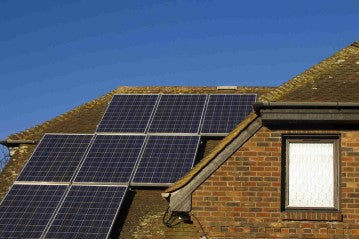
In today's increasingly connected world, having a reliable and efficient power source is essential. Battery paired with inverters provide a versatile solution for powering various devices and appliances. In this guide, we will walk you through the process of connecting an inverter to a battery, ensuring a seamless and effective power supply system.
I. Step-by-Step Guide to Connecting an Inverter to a Battery
A. Assessing Power Requirements and Selecting the Right Inverter
Before diving into the installation process, it is crucial to determine your power needs and choose the appropriate inverter for your battery. Start by assessing the total power consumption of the devices or appliances you wish to run on the battery. This information will help you select an inverter with the right capacity and specifications to meet your requirements.
When selecting an inverter, consider the power requirements and the capacity of your battery. Ensure that the inverter can handle the load without exceeding the battery's capacity, as this could lead to inefficient performance or potential damage to the system.
B. Preparing the Battery for Connection
To ensure a successful connection, it is essential to prepare the battery properly. First, confirm that your battery is compatible with the inverter you have chosen. Different types of batteries have specific compatibility requirements, such as voltage and capacity, which must align with the inverter's specifications.
Next, pay close attention to the battery's wiring and connections. Make sure all connections are secure, clean, and free of corrosion. Properly tightening the terminals and ensuring adequate insulation will help prevent power loss and potential safety hazards.
C. Connecting the Inverter to the Battery
Before starting the connection process, it is crucial to prioritize safety. Ensure that the battery is disconnected from any power source, and wear appropriate protective gear such as gloves and safety glasses.
II. Step-by-Step Guide to Connecting an Inverter to a Battery
To connect the inverter to the battery, follow these steps:
1. Locate the input terminals on the inverter, usually marked as "+" and "-".
2. Connect the positive terminal of the battery to the inverter's positive terminal (+), using an appropriately sized cable.
3. Connect the negative terminal of the battery to the inverter's negative terminal (-), using another appropriately sized cable.
4. Ensure that all connections are secure and tight, using appropriate tools if necessary.
5. Double-check the polarity of the connections to avoid any potential damage to the inverter or the battery.
III. Testing and Maintenance
A. Testing the Inverter and Battery Connection
Once the connection is established, it is essential to test the functionality of the inverter and the battery. Switch on the inverter and verify that it powers up without any issues. Additionally, check if the inverter's output voltage aligns with the battery's specifications.
To ensure optimal performance, test the power output and load capacity of the inverter. Connect various devices and appliances to the inverter, gradually increasing the load. Monitor the system closely to ensure that the inverter can handle the desired power requirements without overheating or malfunctioning.
B. Regular Maintenance and Troubleshooting
To maintain the longevity and efficiency of your inverter and battery system, regular maintenance is crucial. Inspect the battery periodically, checking for any signs of damage, leakage, or corrosion. Clean the terminals and remove any debris that may hinder proper connection or affect performance.
Additionally, monitor the inverter's performance and address any issues promptly. Stay vigilant for warning signs such as unusual noises, excessive heat, or fluctuations in power output. Consult the manufacturer's guidelines for troubleshooting tips or seek professional assistance if needed.
IV. Conclusion
Connecting an inverter to a battery is a critical step in establishing a reliable and efficient power supply system. By carefully assessing power requirements, selecting the right inverter, and following proper installation procedures, you can ensure a seamless connection.
Regular testing and maintenance are key to maximizing the lifespan and performance of your inverter and battery. By keeping a close eye on the system and addressing any issues promptly, you can enjoy uninterrupted power for your devices and appliances.
Remember, if you are unsure about any aspect of the installation process, it is always recommended to seek professional assistance. With the right knowledge and attention to detail, you can create a robust and dependable power supply system that meets your needs efficiently.
As a trusted provider of solar inverters, we take pride in delivering cutting-edge technology that converts solar energy into usable electricity with unrivaled precision and reliability. Our inverters are designed to maximize energy harvest, ensuring efficient power conversion and seamless integration into both residential and commercial solar installations. With Ecgsolax inverters, you can confidently embrace a sustainable lifestyle while enjoying the benefits of reduced energy costs and a smaller carbon footprint.

0 Kommentare